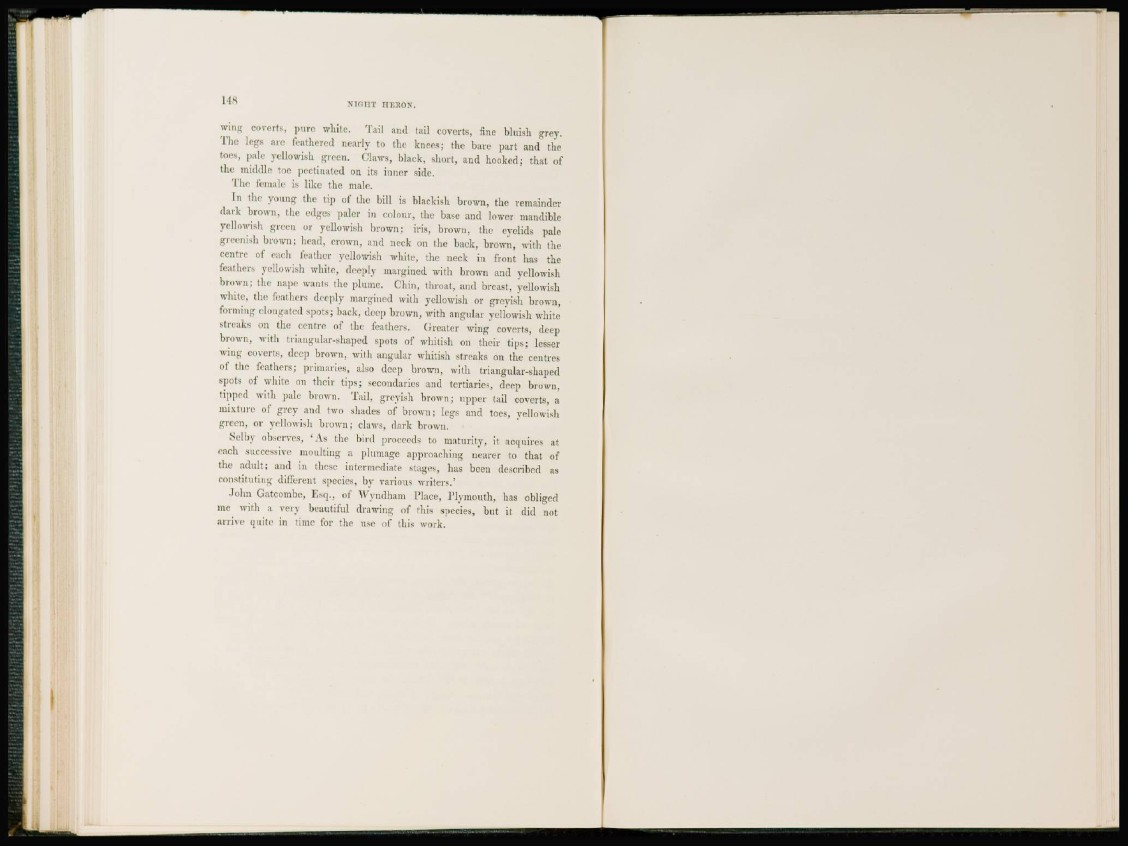
1 IS N I G H T HERON.
wing coverts, pure white. Tail and tail coverts, fine bluish grey.
The legs are feathered nearly to the knees; the bare part and the
toes, pale yellowish green. Claws, black, short, and hooked; that of
the middle toe pectinated on its inner side.
The female is like the male.
In the young the tip of the bill is blackish brown, the remainder
dark brown, the edges paler in colour, the base and lower mandible
yellowish green ur yellowish brown: iris, brown, the eyelids pale
greenish brown; head, crown, and neck on the back, brown, with the
centre of each feather yellowish white, the neck in front has the
feathers yellowish white, deeply margined with brown and yellowish
brown; the nape wants the plume. Chin, throat, and breast, yellowish
white, the feathers deeply margined with yellowish or greyish brown,
forming elongated -pots; back, deep brown, with angular yellowish white
streaks on the centre of the feathers. Greater wing coverts, deep
brown, with triangular-shaped spots of whitish on their tips; lesser
wing coverts, deep brown, with angular whitish streaks on the centres
of the feathers; primaries, also deep brown, with triangular-shaped
spot3 of white on their tips; secondaries and tertiaries, deep brown,
tipped with pale brown. Tail, greyish brown; upper tail coverts
mixture of grey and two shades of brown; legs and toes, yellow
green, or yellowish brown; claws, dark brown.
Selby observes, 4 As the bird proceeds to maturity, it acquires at
each successive moulting a plumage approaching nearer to that of
the adult; and in these intermediate stages, has been described as
constituting different species, by various writers.'
.John Gatcombo, Esq., of Wyndham Place, Plymouth, has obliged
me with a very beautiful drawing of this species, but it did not
arrive quite in time for the use of this work.
i-h